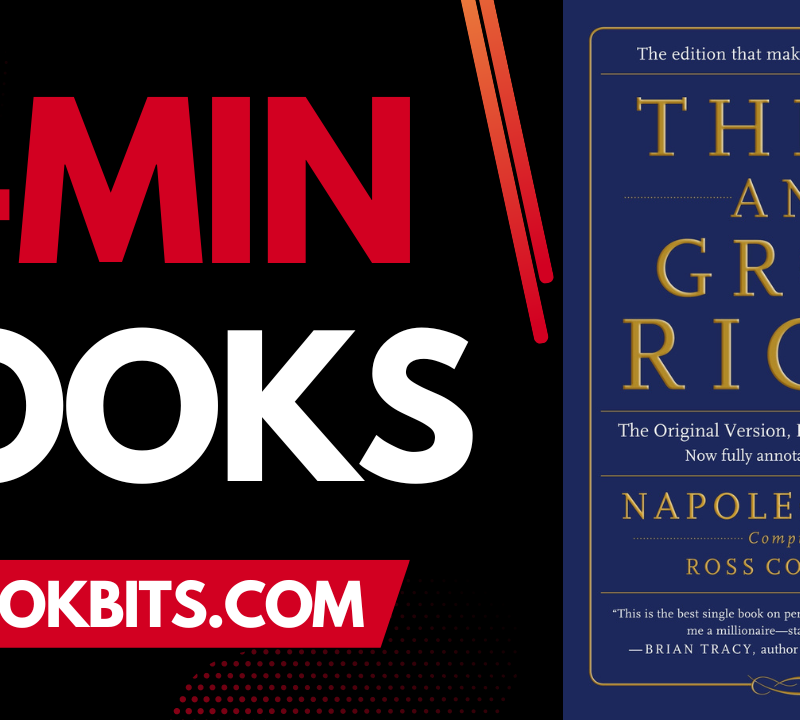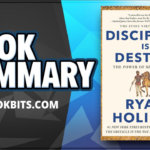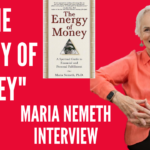★DOWNLOAD THIS FREE PDF SUMMARY HERE https://go.bestbookbits.com/freepdf
? MY FREE BOOK TO LIVING YOUR DREAM LIFE” https://go.bestbookbits.com/first-seven-steps
? SPONSOR BESTBOOKBITS BY USING PATREON https://www.patreon.com/bestbookbits
? SUPPORT BESTBOOKBITS BY CLICKING THE LINKS BELOW
-
- 150 PDF Summaries: https://go.bestbookbits.com/150
- Coaching Program: https://go.bestbookbits.com/coaching
- Subscribe to My Channel: https://www.youtube.com/bestbookbits?sub_confirmation=1
- Website: https://bestbookbits.com
- Instagram: https://www.instagram.com/bestbookbits
- Spotify: https://open.spotify.com/show/0q8OW3dNrLISzyRSEovTBy
- Facebook: https://www.facebook.com/michaelbestbookbits
- Book Club: https://bestbookbits.com/bookclub/
- Mailing List: https://mailchi.mp/d1dfc1907cdb/bestbookbits
FORWARD
…for every thousand people hacking at the leaves of evil, there is one striking at the roots. – Henry David Thoreau
…trust is the ultimate root and source of our influence. (xxiv)
THE KEY FACTOR IN A GLOBAL ECONOMY
Low trust causes friction, whether it is caused by unethical behavior or by ethical but incompetent behavior (because even good intentions can never take the place of bad judgment). Low trust is the greatest cost in life and in organizations, including families. Low trust creates hidden agendas, politics, interpersonal conflict, interdepartmental rivalries, win-lose thinking, defensive and protective communication — all of which reduce the speed of trust. Low trust slows everything — every decision, every communication, and every relationship. (xxv)
Trust is like the aquifer —the huge water pool under the earth that feeds all of the subsurface wells. (xxv)
THE ONE THING THAT CHANGES EVERYTHING
How trust affects the trajectory and outcome of our lives–both personally and professionally-and what we can do to change it.
Nothing Is as Fast as the Speed of Trust
TRUST ISSUES AFFECT EVERYONE
GETTING A HANDLE ON TRUST
Simply put, trust means confidence. The opposite of trust — distrust — is suspicion. (5)
In a high-trust relationship, you can say the wrong thing, and people will still get your meaning. In a low-trust relationship, you can be very measured, even precise, and they’ll still misinterpret you. (6)
THE CRUCIBLE
A CRISIS OF TRUST
…low trust is the very definition of a bad relationship. (12)
If we can’t trust ourselves, we’ll have a hard time trusting others. This personal incongruence is often the source of our suspicions of others. (12-13)
…one of the fastest ways to restore trust is to make and keep commitments — even very small commitments — to ourselves and to others. (13)
THE ECONOMICS OF TRUST
Trust always affects two outcomes — speed and cost. (13)
It’s that simple, that real, that predictable. (13)
“Do you trust your boss?” These companies have learned that the answer to this one question is more predictive of team and organizational performance than any other question they might ask. (17)
THE TRUST TAX
“Widespread distrust in a society … imposes a kind of tax on all forms of economic activity, a tax that high-trust societies do not have to pay.” (Francis Fukuyama) I contend that this low-trust tax is not only on economic activities, but on all activity — in every relationship, in every interaction, in every communication, in every decision, in every dimension of life. (19)
THE TRUST DIVIDEND
I also suggest that, just as the tax created by low trust is real, measurable, and extremely high, so the dividends of high trust are also real, quantifiable, and incredibly high. (19)
THE HIDDEN VARIABLE
Above all, success in business requires two things: a winning competitive strategy, and superb organizational execution. Distrust is the enemy of both. – Robert Shaw
The ability to establish, grow, extend, and restore trust with all stakeholders — customers, business partners, investors, and coworkers — is the key leadership competency of the new global economy. (21)
TRUST MYTHS
You Can Do Something About This!
HOW TRUST WORKS
…trust is one of the most powerful forms of motivation and inspiration. People want to be trusted. They respond to trust. They thrive on trust. (29)
Trust is a function of two things: character and competence. Character includes your integrity, your motive, your intent with people. Competence includes your capabilities, your skills, your results, your track record. (30)
THE 5 WAVES OF TRUST
If you think the problem is out there, that very thought is the problem. – Stephen R. Covey
THE FIRST WAVE: SELF TRUST
…credibility, which comes from the Latin root credere, meaning “to believe.” (34)
THE SECOND WAVE: RELATIONSHIP TRUST
“trust accounts” … The key principle underlying this wave is consistent behavior… (34)
THE THIRD WAVE: ORGANIZATION TRUST
The key principle underlying this wave, alignment, helps leaders create structures, systems, and symbols of organizational trust that decrease or eliminate seven of the most insidious and costly organizational trust taxes, and create seven huge organizational trust dividends. (34)
THE FOURTH WAVE: MARKET TRUST
The underlying principle behind this wave is reputation. (35)
THE FIFTH WAVE: SOCIETAL TRUST
The principle underlying this wave is contribution. (35)
…even trust at the societal level (the fifth wave) can specifically be traced back to issues at the individual level (the first wave), and that individual trust issues actually become geometrically multiplied as we move outward through the waves. (35)
The final section deals with Inspiring Trust. This includes learning how to extend “Smart Trust” — how to avoid gullibility (blind trust) on one hand and suspicion (distrust) on the other and how to find that “sweet spot” where extending trust creates big dividends for everyone. (35)
RESTORING TRUST
The best time to plant a tree is twenty years ago. The second best time is today. – Chinese Proverb
SEE/SPEAK/BEHAVE
Much has been said about the importance of changing paradigms in changing behavior — in other words, changing the way you see will automatically change what you do and the results you get. And I agree that a new way of seeing, a paradigm shift, has an enormous impact on doing and on results. (39)
However, from a pragmatic standpoint, I am equally convinced that speaking and behaving differently can also have an enormous impact on the way you see and the results you get. (39)
MAKING IT HAPPEN
You are a leader, even if only of yourself. (40)
Leadership is getting results in a way that inspires trust. (40)
To get things done in ways that destroy trust is not only shortsighted and counterproductive; it is ultimately unsustainable. (40)
THE FIRST WAVE–SELF TRUST
THE PRINCIPLE OF CREDIBILITY
Beyond “ethics”: Why personal credibility is the foundation of all trust and how to create it.
The 4 Cores of Credibility
Whatever decision I made when I set the alarm, I wanted my commitment to be clear and to act with integrity. Otherwise, I would continue to lose trust in my ability to do what I had made a personal commitment to do. (45)
Research shows that many of us don’t follow through on the goals we set or don’t keep the promises and commitments we make to ourselves. (45)
…a person’s self-confidence affects his or her performance. (46)
…building self-confidence in others is a huge part of leadership. – Jack Welch
A man who doesn’t trust himself can never really trust anyone else. – Cardinal de Retz
Self-trust is the first secret of success…the essence of heroism. – Ralph Waldo Emerson
Most of the time, it’s not the huge, visible withdrawals like Enron and WorldCom ethics violations that wipe out organizational trust. It’s the little things — a day at a time, a weak or dishonest act at a time — that gradually weaken and corrode credibility. (47)
★DOWNLOAD THIS FREE PDF SUMMARY HERE https://go.bestbookbits.com/freepdf
? MY FREE BOOK TO LIVING YOUR DREAM LIFE” https://go.bestbookbits.com/first-seven-steps
? SPONSOR BESTBOOKBITS BY USING PATREON https://www.patreon.com/bestbookbits
? SUPPORT BESTBOOKBITS BY CLICKING THE LINKS BELOW
-
- 150 PDF Summaries: https://go.bestbookbits.com/150
- Coaching Program: https://go.bestbookbits.com/coaching
- Subscribe to My Channel: https://www.youtube.com/bestbookbits?sub_confirmation=1
- Website: https://bestbookbits.com
- Instagram: https://www.instagram.com/bestbookbits
- Spotify: https://open.spotify.com/show/0q8OW3dNrLISzyRSEovTBy
- Facebook: https://www.facebook.com/michaelbestbookbits
- Book Club: https://bestbookbits.com/bookclub/
- Mailing List: https://mailchi.mp/d1dfc1907cdb/bestbookbits
THE 4 CORES
Core 1: Integrity
While integrity includes honesty, it’s much more. It’s integratedness. It’s walking your talk. It’s being congruent, inside and out. It’s having the courage to act in accordance with your values and beliefs.
Core 2: Intent
This has to do with our motives, our agendas, and our resulting behavior. Trust grows when our motives are straightforward and based on mutual benefit — in other words, when we genuinely care not only for ourselves, but also for the people we interact with, lead, or serve. (54-55)
Core 3: Capabilities
These are the abilities we have that inspire confidence — our talents, attitudes, skills, knowledge, and style. (55)
Core 4: Results
This refers to our track record, our performance, our getting the right things done. (55)
Core 1 – Integrity
Are You Congruent?
…”the Roddick Choice” — demonstrating integrity even when it is costly. (60)
THE PROBLEM WITH THE RENAISSANCE OF “ETHICS”
The problem in organizations, however, is that many “ethics” solutions focus on compliance. The compliance definition of “ethics” is not one of integrity or integratedness; it is a watered-down, devalued definition that essentially means “follow the rules.” (61)
DEFINING INTEGRITY
It’s possible to tell the truth, but leave the wrong impression. And that’s not being honest. (62)
Congruence. A person has integrity when there is no gap between intent and behavior … when he or she is whole, seamless, the same — inside and out. (62)
People who are congruent act in harmony with their deepest values and beliefs. They walk their talk. When they feel they ought to do something, they do it. They’re not driven by extrinsic forces, including the opinions of others or the expediency of the moment. The voice they listen and respond to is the quiet voice of conscience. (62)
Humility. A humble person is more concerned about what is right than about being right, about acting on good ideas than having the ideas, about embracing new truth than defending outdated position, about building the team than exalting self, about recognizing contribution than being recognized for making it. (64)
HOW TO INCREASE YOUR INTEGRITY
- Make and Keep commitments to Yourself
…there’s no way you will be able to do that effectively if you haven’t first learned to make and keep commitments yourself. (66)
Every time we make and keep a commitment to ourselves — large or small — we increase our self-confidence. We build our reserves. We enlarge our capacity to make and keep greater commitments, both to ourselves and to others. (67)
First, don’t make too many commitments. (67)
Second, treat a commitment you make to yourself with as much respect as you do the commitments you make to others. (68)
Third, don’t make commitments impulsively. (68)
Finally, understand that when keeping your commitment becomes hard, you have two choices: You can change your behavior to match your commitment, or you can lower your values to match your behavior. One choice will strengthen your integrity; the other will diminish it and erode your confidence in your ability to make and keep commitments in the future. (68)
- Stand for Something
An excellent way to identify the values you want to stand for is to go through some kind of purpose- or values-clarification process. I have found nothing more valuable than the creation of a mission statement or credo, whether it be personal, family, or organizational. Creating an expression of what you stand for — and living by it — will pay great dividends in helping you become credible and trusted.
- Be Open
You’ve probably been around people you consider close-minded or arrogant — people who don’t really listen to you because they think there’s nothing you could say they don’t already know; people who refuse to consider new ways of looking at things because they are convinced that theirs is the only accurate way of thinking; people who will stare truth in the face and reject it because they’re not willing to accept the possibility that there is some reality, some principle out there, they weren’t even aware of. How does that ego-invested attitude affect your ability to relate to these people? How does it affect your perception of their credibility? How does it affect your willingness to extend trust? (70)
Openness is vital to integrity. (71)
- Do I believe that the way I see the world is totally accurate and complete — or am I honestly willing to listen to and consider new viewpoints and ideas?
- Do I seriously consider differing points of view (from a boss, direct report, team member, spouse, or child), and am I willing to be influenced by them?
- Do I believe there may be principles that I have not yet discovered? Am I determined to live in harmony with them, even if it means developing new thinking patterns and habits?
- Do I value — and am I involved in — continual learning?
To the degree to which you remain open to new ideas, possibilities, and growth, you create a trust dividend; to the degree you do not, you create a trust tax that impacts both your current and future performance. (72)
Core 2 – Intent
What’s Your Agenda?
In law, a man is guilty when he violates the rights of another. In ethics, he is guilty if he only thinks of doing so. – Immanuel Kant
THE IMPORTANCE OF INTENT
THE IMPACT OF INTENT ON TRUST
WHAT IS “INTENT”?
…motive, agenda, and behavior. (78)
Motive. The motive that inspires the greatest trust is genuine caring — caring about people, caring about purposes, caring about the quality of what you do, caring about society as a whole. (78)
…there are few trust taxes that are higher than those attached to duplicity, particularly regarding motive. (80)
Agenda. It’s what you intend to do or promote because of your motive. (80)
Two things: “I mean you no harm” and “I seek your greatest good.” – Jim Meehan
Behavior. It’s easy to say “I care” and “I want you to win,” but it is our actual behavior that demonstrates whether or not we mean it. (81)
THE TRUSTEE STANDARD
BAD EXECUTION OF GOOD INTENT. …none of us likes to have our motives unfairly attributed to our behavior. (84)
HOW TO IMPROVE INTENT
- Examine and Refine Your Motives
- Why am I feeling unappreciated and undervalued? Because I don’t think the people around here see the good work I do.
- Why do I think they don’t see the good work I do? Because they seem to be totally focused on the new blood–the “rising stars.”
- What makes me think they’re focused on the rising stars? The fact that Sarah got promoted last week–and it should have been me!
- Why do I think Sarah got promoted instead of me? I don’t know. Maybe that’s what I really want to talk to my boss about.
- Why do I want to talk to my boss about it?Well, I suppose my original intent was to vent and complain about Sarah’s promotion. But I guess what I really want to understand is what I can do to add more value to the company so that I will be considered more seriously when future promotions come around.
So if you need to refine or elevate your intent, … First, make sure you have identified the principles that will bring the results you want. Second, recognize that you may need help to create this deeper inner change–and seek it. … Third, behave your way into the person you want to be. (87)
- Declare Your Intent
- Choose Abundance
…abundance is not only a reality, it is an attractor and generator of even more. (88)
The measure of your life will not be in what you accumulate, but in what you give away. – Dr. Wayne Dyer
Core 3 – Capabilities
Are You Relevant?
Left untended, knowledge and skill, like all assets, depreciate in value–surprisingly quickly – David Maister
The main message here for both individuals and organizations is that to remain credible in today’s world, we need to constantly improve our capabilities. (93)
TASKS: Talents, Attitudes, Skills, Knowledge, Style
Talents are our natural gifts and strengths. Attitudes represent our paradigms–our ways of seeing, as well as our ways of being. Skills are our proficiencies, the things we can do well. Knowledge represents our learning, insight, understanding, and awareness. Style represents our unique approach and personality. (94)
The Tiger Creed: “I improve, therefore I am.“
Japanese call it “kaizen” or continuous improvement. (98)
What if you train everyone and they all leave? | What if we don’t train them and they all stay? (99)
If you don’t like change, you’re going to like irrelevance even less. – General Eric Shinseki
HOW TO INCREASE YOUR CAPABILITIES …the three accelerators that make the greatest difference are the following:
- Run with Your Strengths (and with Your Purpose). Peter Drucker encourages leaders to “feed opportunities and starve problems.” (104)
- Keep Yourself Relevant. …you really need a forty-year degree. In other words, you need to be engaged in lifelong learning. (105)
I am always learning and working at the margin of my ignorance. – Harvey Golub
- Know Where You’re Going. “At the end of the day, people follow those who know where they’re going.” – Jack Trout (106)
TRUST ABILITIES. I would go so far as to say that your technical capabilities are taxed dramatically–sometimes even becoming irrelevant–in direct relation to your trust abilities. (107)
Core 4 – Results
What’s Your Track Record?
…there are three key indicators by which people evaluate results. One is past performance–your track record, your reputation, the things you’ve done, and the results you’ve already achieved. Another is current performance–how you are performing today. And the third is anticipated performance–how people think you will perform in the future. (112)
We thought that we were selling the transportation of goods; in fact, we were selling peace of mind. – Frederick Smith, FedEx
…through results, you can establish trust faster than you think. …through results you can also restore trust faster than you think. (113)
…it is results that will convert the cynics. (114)
“WHAT” AND “HOW.” I define leadership as getting results in a way that inspires trust. I am convinced that with regard to results, the how matters every bit as much as the what. (115)
Everyone realized that they were confronting reality, but they were doing it in a principled way that demonstrated care and concern for all. | Keep in mind that “results” can’t always be measured in dollars and cents. In fact, to ignore the trust tax or dividend in any analysis is to skew the results. The greatest profit may not be in the current transaction, but in the credibility and trust that comes from that transaction that paves the way for even greater results in the future. (115)
DEFINING “RESULTS.” In our businesses, relationships, families, and personal lives, there is wisdom in recognizing the capacity of people to learn from their mistakes and to change. There is also wisdom to learn from their mistakes and to change. There is also wisdom in creating a culture that makes it safe for that to happen. (117)
COMMUNICATING RESULTS
HOW TO IMPROVE YOUR RESULTS
- Take Responsibility for Results. … a real key to success is in taking responsibilities for results–not activities. (119)
…there’s another positive dimension to taking responsibility for results. As I’ve emphasized over and over in this chapter, accomplishing results will build credibility and trust. But simply taking responsibility for results will also build credibility and trust–sometimes even when the results are not good…and sometimes when they were not even your fault. (120)
It’s no use saying, “We are doing our best.” You have got to succeed in doing what is necessary. – Winston Churchill
- Expect to Win. …”the Pygmalion effect,” it’s also been called the Galatea effect, the Rosenthal effect, self-fulfilling prophecy, positive self-expectancy, confidence, optimism, or just plain faith. (121)
We tend to get what we expect–both from ourselves and from others. When we expect more, we tend to get more; when we expect less, we tend to get less. (122)
“Confidence consists of positive expectations for favorable outcomes…winning begets winning, because it produces confidence at four levels.” The first of those levels, [Rosabeth Moss Kanter] says, is “self-confidence: an emotional climate of high expectations.” The second level is “confidence in one another.” (122)
- Finish Strong. Beginners are many; finishers are few. Increasingly, it seems, we live in a society of victims and quitters. (123)
★DOWNLOAD THIS FREE PDF SUMMARY HERE https://go.bestbookbits.com/freepdf
? MY FREE BOOK TO LIVING YOUR DREAM LIFE” https://go.bestbookbits.com/first-seven-steps
? SPONSOR BESTBOOKBITS BY USING PATREON https://www.patreon.com/bestbookbits
? SUPPORT BESTBOOKBITS BY CLICKING THE LINKS BELOW
-
- 150 PDF Summaries: https://go.bestbookbits.com/150
- Coaching Program: https://go.bestbookbits.com/coaching
- Subscribe to My Channel: https://www.youtube.com/bestbookbits?sub_confirmation=1
- Website: https://bestbookbits.com
- Instagram: https://www.instagram.com/bestbookbits
- Spotify: https://open.spotify.com/show/0q8OW3dNrLISzyRSEovTBy
- Facebook: https://www.facebook.com/michaelbestbookbits
- Book Club: https://bestbookbits.com/bookclub/
- Mailing List: https://mailchi.mp/d1dfc1907cdb/bestbookbits
THE SECOND WAVE — RELATIONSHIP TRUST
THE PRINCIPLE OF BEHAVIOR
How to behave yourself out of problems you’ve behaved yourself into
You can’t talk yourself out of a problem you’ve behaved yourself into. – Stephen R. Covey
No, but you can behave yourself out of problem you’ve behaved yourself into…and often faster than you think! – Stephen M. R. Covey
People don’t listen to you speak; they watch your feet. – Anonymous
BEHAVIOR MATTERS
YOU CAN CHANGE BEHAVIOR. …the difference between those who change behavior and those who don’t is a compelling sense of purpose. (129)
It takes twenty years to build a reputation and five minutes to ruin it. – Warren Buffett
The 13 Behaviors
Behavior #1: Talk Straight
TELL THE TRUTH AND LEAVE THE RIGHT IMPRESSION
If I were two-faced, would I be wearing this one? – Abraham Lincoln
SUMMARY: BEHAVIOR #1–TALK STRAIGHT
Be honest. Tell the truth. Let people know where you stand. Use simple language. Call things what they are. Demonstrate integrity. Don’t manipulate people or distort facts. Don’t spin the truth. Don’t leave false impressions. (143)
Behavior #2: Demonstrate Respect
…demonstrate caring and concern. (145)
SUMMARY: BEHAVIOR #2–DEMONSTRATE RESPECT
Genuinely care for others. Show you care. Respect the dignity of every person and every role. Treat everyone with respect, especially those who can’t do anything for you. Show kindness in the little things. Don’t fake caring. Don’t attempt to be “efficient” with people.(151)
Behavior #3: Create Transparency
Sunshine is the best disinfectant – U.S. Supreme Court Justice Louis Brandeis
Many companies create transparency with their own employees by going to what is known as Open Book Management — opening their financial statements for the entire company to see. (155)
Creating transparency also creates buy-in. (156)
SUMMARY: BEHAVIOR #3–CREATE TRANSPARENCY
Tell the truth in a way people can verify. Get real and genuine. Be open and authentic. Err on the side of disclosure. Operate on the premise of “What you see is what you get.” Don’t have hidden agendas. Don’t hide information.(157)
Behavior #4: Right Wrongs
To know what is right and not to do it is the worst cowardice. – Confucius
GOING THE EXTRA MILE. Right Wrongs–is more than simply apologizing; it’s also making restitution. It’s making up and making whole. (159)
SUMMARY: BEHAVIOR #4–RIGHT WRONGS
Make things right when you’re wrong. Apologize quickly. Make restitution where possible. Practice “service recoveries.” Demonstrate personal humility. Don’t cover things up. Don’t let pride get in the way of doing the right things. (164)
Behavior #5: Show Loyalty
A leader doesn’t need any credit…He’s getting more credit than he deserves anyway. – Robert Townsend, former CEO, Avis
GIVE CREDIT TO OTHERS. Dottie Gandy makes the point that it is not only important to give credit to people for what they do, but also to acknowledge people for who they are. (167)
SPEAK ABOUT OTHERS AS IF THEY WERE PRESENT. …people who talk about others behind their backs often seem to think that it will build some kind of camaraderie and trust with those who are there. But the exact opposite is true. When you talk about others behind their backs, it causes those who are present to think you’ll do the same to them when they’re not there. (168)
Keep in mind that often loyalty to principle is the best way to demonstrate loyalty to people. (171)
SUMMARY: BEHAVIOR #5–SHOW LOYALTY
Give credit freely. Acknowledge the contributions of others. Speak about people as if they were present. Represent others who aren’t there to speak for themselves. Don’t bad-mouth others behind their backs. Don’t disclose others’ private information. (171)
Behavior #6: Deliver Results
The counterfeit is delivering activities instead of results. (172)
I finally learned to look for people who are short on talk and long on delivery. (172)
THE IMPACT ON TRUST ACCOUNTS. Deliver Results is how you convert the cynics. (174)
CLARIFY “RESULTS” UP FRONT.
SUMMARY: BEHAVIOR #6–DELIVER RESULTS
Establish a track record of results. Get the right things done. make things happen. Accomplish what you’re hired to do. Be on time and within budget. Don’t overpromise and underdeliver. Don’t make excuses for not delivering. (176)
Behavior #7: Get Better
The illiterate of the 21st century will not be those who cannot read and write but those who cannot learn, unlearn, and relearn. – Alvin Toffler
GET BETTER BUILDS TRUST. kaizen, Japanese for continuous improvement. (178)
The opposite of Get Better is entropy, deterioration, resting on your laurels, or becoming irrelevant. (178)
Get Better has two common counterfeits. The first is represented by the “eternal student,” the person who is always learning but never producing. The second is represented by author Frank Herbert’s observation: “The people I distrust most are those who want to improve our lives but have only one course of action.” It’s trying to force-fit everything into whatever you’re good at doing It’s the manifestation of psychologist Abraham Maslow’s thought: “He that is good with a hammer tends to think everything is a nail.” (179)
Constant reinvention is the central necessity at GE…We’re all just a moment away from commodity hell. – Jeffrey Imelt
What differentiates the best from the good companies is not whether they ask the questions, it’s how they respond to the answers. (181)
SUMMARY: BEHAVIOR #7–GET BETTER
Continuously improve. Increase your Capabilities. Be a constant learner. Develop feedback systems–both formal and informal. Act on the feedback you receive. Thank people for feedback. Don’t consider yourself above feedback. Don’t assume today’s knowledge and skills will be sufficient for tomorrow’s challenges. (184)
Behavior #8: Confront Reality
…is about taking the tough issues head-on. It’s about sharing the bad news as well as the good, naming the “elephant in the room,” addressing the “sacred cows,” and discussing the “undiscussables.” (185)
The opposite of Confront Reality is to ignore it, to act as though it doesn’t exist. It’s burying your head in the sand, thinking that maybe it will go away or that it’s not really there after all. The counterfeit is to act as though you’re confronting reality when you’re actually evading it. It’s focusing on busywork while skirting the real issues.
| One of the problems with both the opposite and the counterfeit is that whenever you fail to deal with the real issues for any reason, people tend to see you in one of two ways: They see you as lacking in character (you’re not being open or honest, not being transparent, not talking straight) or lacking in competence (you’re clueless, naïve, incompetent; you don’t even know what the real issues are). Either way, it doesn’t inspire trust. (187)
SUMMARY: BEHAVIOR #8–CONFRONT REALITY
Take issues head on, even the “undiscussables.” Address the tough stuff directly. Acknowledge the unsaid. Lead out courageously in conversation. Remove the “sword from their hands.” Don’t skirt the real issues. Don’t bury your head in the sand.
Behavior #9: Clarify Expectations
EXPECTATIONS AND TRUST. I call it the behavior of prevention because if you focus on this one up front, you will avoid heartaches and headaches later on. (193)
It’s wise to look at three variables–quality, speed, and cost. … It’s almost always a choice: to get two, you have to give up one. (197)
SUMMARY: BEHAVIOR #9–CLARIFY EXPECTATIONS
Disclose and reveal expectations. Discuss them. Validate them. Renegotiate them if needed and possible. Don’t violate expectations. Don’t assume that expectations are clear or shared.
Behavior #10: Practice Accountability
There are two key dimensions to this Practice Accountability. The first is to hold yourself accountable; the second is to hold others accountable. Leaders who generate trust do both. (200)
A good leader takes more than their fair share of the blame and gives more than their share of the credit. – Arnold Glasnow
One reason why taking responsibility and holding ourselves accountable is challenging is that we live in an increasingly victimized society. (203)
★DOWNLOAD THIS FREE PDF SUMMARY HERE https://go.bestbookbits.com/freepdf
? MY FREE BOOK TO LIVING YOUR DREAM LIFE” https://go.bestbookbits.com/first-seven-steps
? SPONSOR BESTBOOKBITS BY USING PATREON https://www.patreon.com/bestbookbits
? SUPPORT BESTBOOKBITS BY CLICKING THE LINKS BELOW
-
- 150 PDF Summaries: https://go.bestbookbits.com/150
- Coaching Program: https://go.bestbookbits.com/coaching
- Subscribe to My Channel: https://www.youtube.com/bestbookbits?sub_confirmation=1
- Website: https://bestbookbits.com
- Instagram: https://www.instagram.com/bestbookbits
- Spotify: https://open.spotify.com/show/0q8OW3dNrLISzyRSEovTBy
- Facebook: https://www.facebook.com/michaelbestbookbits
- Book Club: https://bestbookbits.com/bookclub/
- Mailing List: https://mailchi.mp/d1dfc1907cdb/bestbookbits
SUMMARY: BEHAVIOR #10–PRACTICE ACCOUNTABILITY
Hold yourself accountable. Hold others accountable. Take responsibility for results. Be clear on how you’ll communicate how you’re doing–and how others are doing. Don’t avoid or shirk responsibility. Don’t blame others or point fingers when things go wrong.
Behavior #11: Listen First
When was the last time you heard someone criticized for listening too much? – Norm Augustine
Leadership has less to do with walking in front and leading the way than it does with listening to the needs of the people of the company and meeting them. – Charles M. Cawley
I have found that the two best qualities a CEO can have are the ability to listen and to assume the best motives in others. – Jack M. Greenberg
SUMMARY: BEHAVIOR #11–LISTEN FIRST
Listen before you speak. Understand. Diagnose. Listen with your ears–and your eyes and heart. Find out what the most important behaviors are to the people you’re working with. Don’t assume you know what matters most to others. Don’t presume you have all the answers–or all the questions.
Behavior #12: Keep Commitments
…when you make a commitment, you build hope. (213)
The 10-Year Rule. Ten years from now, what will I be glad I did? (219)
SUMMARY: BEHAVIOR #12–KEEP COMMITMENTS
Say what you’re going to do, then do what you say you’re going to do. Make commitments carefully and keep them. Make keeping commitments the symbol of your honor. Don’t break confidences. Don’t attempt to “PR” your way out of a commitment you’ve broken.
Behavior #13: Extend Trust
Trust men and they will be true to you; treat them greatly and they will show themselves great. – Ralph Waldo Emerson
Behavior #13–Extend Trust–is different in kind from the rest of the behaviors. It’s about shifting from “trust” as a noun to “trust” as a verb. While the other behaviors help you become a more trusted person or manager, this behavior will help you become a more trusting leader. Not only does it build trust, it leverages trust. It creates reciprocity; when you trust people, other people tend to trust you in return. Additionally (and ironically), extending trust is one of the best ways to create trust when it’s not there. (223)
You don’t want to extend trust indiscriminately or unwisely. You’ll get taken to the cleaners. You’ll get burned. But neither do you want to withhold trust when extending it could bring such enormous benefits. (224)
WHAT HAPPENS WHEN YOU EXTEND TRUST. Extend Trust is based on the principles of empowerment, reciprocity, and a fundamental belief that most people are capable of being trusted, want to be trusted, and will run with trust when it is extended to them. (225)
We treat our people the way we want them to treat the customers. – Vincent Stabile
…a lot of the procedures in many organizations were designed to catch the 3 percent who were trying to cheat in one way or another. We decided to design our rules for the 97 percent we can trust. – Gordon Forward
Are we letting the “few” define the “many”? (227)
The counterfeit of Extend Trust takes two forms. The first is extending “false trust.” It’s giving people the responsibility, but not the authority or resources to get a task done. The second is extending “fake trust”–acting like you trust someone when you really don’t. In other words, you entrust someone with a job, but at the end of the day, you “snoopervise,” hover over or “big brother” the person, or perhaps even do his job for him. (227)
A POWERFUL MOTIVATOR. …there is nothing that motivates, or inspires, people like having trust extended to them. When it is, people don’t need to be managed or supervised; they manage themselves. (227)
By extending trust, you empower people. You leverage your leadership. You create a high-trust culture that brings out the best in people, creates high-level synergy, and maximizes the ability of any organization–whether it be a business, a school, an NPO, or a family–to accomplish what it sets out to do. (228)
SUMMARY: BEHAVIOR #13–EXTEND TRUST
Demonstrate a propensity to trust. Extend trust abundantly to those who have earned your trust. Extend trust conditionally to those who are earning your trust. Learn how to appropriately extend trust to others based on the situation, risk, and credibility (character and competence) of the people involved. But have a propensity to trust. Don’t withhold trust because there is risk involved. (229)
Creating an Action Plan
…the quickest way to make a withdrawal is to violate a behavior of character; the quickest way to make a deposit is to demonstrate a behavior of competence. (230)
Download the Trust Action Plan Chart.
THE THIRD, FOURTH, AND FIFTH WAVES — STAKEHOLDER TRUST
How to increase speed, lower cost, and maximize the influence of your organization.
The Third Wave — Organizational Trust
The Principle of Alignment
All organizations are perfectly aligned to get the results they get. – Arthur W. Jones
Truly, symbols are powerful. They carry disproportionate value. They always override rhetoric. They communicate paradigms far more clearly than words. And they do so with geometric influence. (240)
THE 7 LOW-TRUST ORGANIZATIONAL TAXES
- Redundancy
…a redundancy tax is paid in excessive organizational hierarchy, layers of management, and overlapping structures all designed to ensure control. For the most part, it grows out of the paradigm that unless people are tightly supervised, they can’t be trusted. And it is very costly. (250)
- Bureaucracy
Low trust breeds bureaucracy, and bureaucracy breeds low trust. In low-trust organizations, bureaucracy is everywhere. (251)
- Politics
…in many ways, “politics” is an antonym for trust. (251)
- Disengagement
Disengagement is what happens when people continue to work at a company, but have effectively quit (commonly referred to as “quit and stay”). They put in what effort they must to get their paycheck and not get fired, but they’re not giving their talent, creativity, energy, or passion. (251)
- Turnover
I’m not talking about the desirable turnover of nonperformers, but the undesirable turnover of performers. (251)
On average, it costs companies one and half to two times the annual salary to replace an exiting worker. (252)
- Churn
Churn is the turnover of stakeholders other than employees. (253)
My sister told me about a restaurant she went to recently where she asked the waiter what he recommended from the menu. The waiter’s response? “I recommend going to another restaurant.” (253)
…employees tend to treat customers the way they’re treated by management. (253)
- Fraud
THE 7 HIGH-TRUST ORGANIZATIONAL DIVIDENDS
- Increased Value
- Accelerated Growth
- Enhanced Innovation
- Improved Collaboration
Different than the traditional approaches of coordination and cooperation, real collaboration creates the key opportunity model of today’s world. (256)
- Stronger Partnering
- Better Execution
It is better to have grade-B strategy and grade-A execution than the other way around. (257)
- Heightened Loyalty
Nothing is as fast as the speed of trust. Nothing is as profitable as the economics of trust. Nothing is as relevant as the pervasive impact of trust. (258)
The ability to establish, grow, extend, and restore trust truly is the key leadership competency of the new global economy. (258)
FAMILIES ARE ORGANIZATIONS TOO
The Fourth Wave — Market Trust
The Principle of Reputation
In the end, all you have is your reputation – Oprah Winfrey
Market Trust is all about brand or reputation. (262)
HOW TO BUILD YOUR BRAND
I strongly contend that if your organization (however you define it) strengthens its 4 Cores and demonstrates the 13 Behaviors with its stakeholders, you will be able to measurably increase the value of your organization’s brand. (269)
Whatever trust we are able to create in our organizations and in the marketplace is the result of the credibility we first create in ourselves. (271)
The Fifth Wave — Societal Trust
The Principle of Contribution
Executives tempted to take shortcuts should remember the dictum of Confucius that good government needs weapons, food and trust. If the ruler cannot hold onto all three, he should give up weapons first and food next. Trust should be guarded to the end, because “without trust, we cannot stand.” Financial Times Editorial
Every kind of peaceful cooperation among men is primarily based on mutual trust and only secondarily on institutions such as courts of justice and police. – Albert Einstein
GLOBAL CITIZENSHIP: AN INDIVIDUAL CHOICE. It’s you and me making the conscious decision to value and invest in the well-being of others. (281)
INSPIRING TRUST
In this final section, I want to show you that, whatever your situation, you can learn how to extend “Smart Trust.” You can develop the competence to extend trust in ways that avoid the pitfalls and ensure the greatest dividends for all concerned. You can also learn how to restore trust when it has been lost, and how to develop the propensity to trust that is absolutely vital to effective leadership and life. (286)
How to extend “Smart Trust,” restore trust, and take the exponential leap of faith that makes all the difference … and why not extending trust is the greatest risk of all.
Extending “Smart Trust”
THE “SMART TRUST” MATRIX
Civility has two parts: generosity when it is costly, and trust, even when there is risk. – Stephen Carter
The objective, then, is not to avoid risk. In the first place, you can’t; and in the second place, you wouldn’t want to because risk-taking is an essential part of life. (288-289)
“Propensity to Trust” is primarily a matter of the heart. It’s the tendency, inclination, or predisposition to believe that people are worthy of trust and a desire to extend it to them freely. (289)
What is the opportunity (the situation or task at hand)?
What is the risk involved?
What are the possible outcomes?
What is the likelihood of the outcomes?
What is the importance and visibility of the outcomes?
What is the credibility (character/competence) of the people involved?
Restoring Trust When It Has Been Lost
One of the greatest obstacles to building and restoring trust is the superficial, two-dimensional paradigm that the ideal life is challenge-free. It’s not. We are going to have challenges. We are going to make mistakes. And others are going to make mistakes that affect us. That’s life. The issue is how we respond to those things–whether or not we choose to prioritize the enormous long-term dividends of trust over whatever temporary satisfaction we may get from doing things that break trust, trying to justify low-trust behavior, holing grudges, or failing to forgive. (302)
As in almost every other aspect of life, breakdowns can create breakthroughs. (303)
WHEN OTHERS HAVE LOST YOUR TRUST
Don’t be too quick to judge.
Do be quick to forgive.
Keep in mind that we garner strength to forgive those who have wronged us not by what they do, but by what w edo. And we don’t forgive to abdicate the “offender”; as Mandela modeled, we forgive to bring clarity and peace to ourselves. (313)
He that cannot forgive others breaks the bridge over which he, too, must pass – Lord Herbert
A Propensity to Trust
When mores [cultural values] are sufficient, laws are unnecessary. When mores are insufficient, laws are unenforeable. – Émile Durkheim
When the fever was at its worst, [Philip] said he hoped to save the king by means of a strong medicine which he was going to prepare.
Just after Philip went out to brew this potion, Alexander received a letter which warned him to beware of his physician, as the man had been bribed by the Persian king, Darius III, to poison him.
After reading the letter, Alexander slipped it under his pillow, and calmly waited for the return of his doctor. When Philip brought the cup containing the promised remedy, Alexander took it in one hand, and gave him the letter with the other. Then, while Philip was reading it, he drank every drop of the medicine.
When the physician saw the accusation, he turned deadly pale, and looked up at his master, who smilingly handed back the empty up. Alexander’s great trust in his doctor was fully justified; for the medicine cured him, and he was soon able to go on… – H.A. Guerber on Alexander the Great
Better trust all and be deceived,
And weep that trust, and that deceiving,
Than doubt one heart that, if believed
Had blessed one’s life with true believing.
– Frances Anne Kemble
In everybody’s life, at some time, our inner fire goes out. It is then burst into flame by an encounter with another human being. We should all be thankful for those people who rekindle the inner spirit. – Albert Schweitzer
★DOWNLOAD THIS FREE PDF SUMMARY HERE https://go.bestbookbits.com/freepdf
? MY FREE BOOK TO LIVING YOUR DREAM LIFE” https://go.bestbookbits.com/first-seven-steps
? SPONSOR BESTBOOKBITS BY USING PATREON https://www.patreon.com/bestbookbits
? SUPPORT BESTBOOKBITS BY CLICKING THE LINKS BELOW
-
- 150 PDF Summaries: https://go.bestbookbits.com/150
- Coaching Program: https://go.bestbookbits.com/coaching
- Subscribe to My Channel: https://www.youtube.com/bestbookbits?sub_confirmation=1
- Website: https://bestbookbits.com
- Instagram: https://www.instagram.com/bestbookbits
- Spotify: https://open.spotify.com/show/0q8OW3dNrLISzyRSEovTBy
- Facebook: https://www.facebook.com/michaelbestbookbits
- Book Club: https://bestbookbits.com/bookclub/
- Mailing List: https://mailchi.mp/d1dfc1907cdb/bestbookbits
















